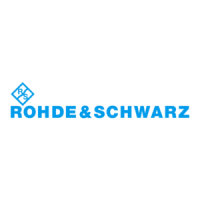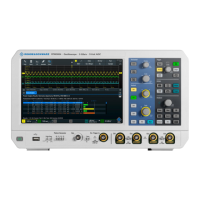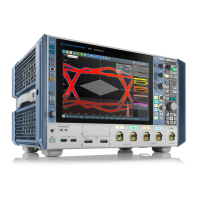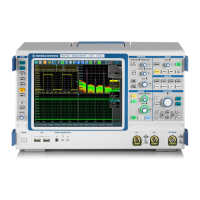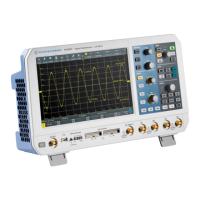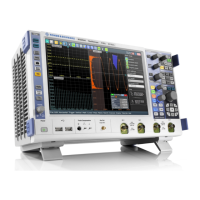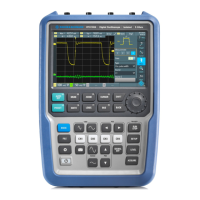Acquisition and Waveform Setup
R&S
®
RTM20xx
13User Manual 1317.4726.02 ─ 01
2.1.2.1 Sampling and Processing
The A/D converter samples the continuous signal under test at specific points in time and
delivers digital values called ADC samples. The rate at which the converter is working
is the ADC sample rate, a constant value usually specified in GHz: f
ADC
=
1 / T
I
The digital ADC samples are processed according to the acquisition settings. The result
is a waveform record that contains waveform samples and is stored in the waveform
memory. The waveform samples are displayed on the screen and build up the waveform.
The number of waveform samples in one waveform record is called record length, and
the rate of recording waveform samples - the number of waveform samples per second
- is the sample rate. The higher the sample rate, the better is the resolution and the more
details of the waveform are visible.
A sufficient resolution is essential for correct reconstruction of the waveform. If the signal
is undersampled, aliasing occurs - a false waveform is displayed. To avoid aliasing and
accurately reconstruct a signal, Nyquist theorem postulates that the sample rate must be
at least twice as fast as the highest frequency component of the signal. However, the
theorem assumes ideal conditions, so the Nyquist sample rate is usually not sufficient.
Basics
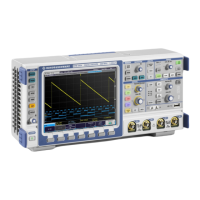
